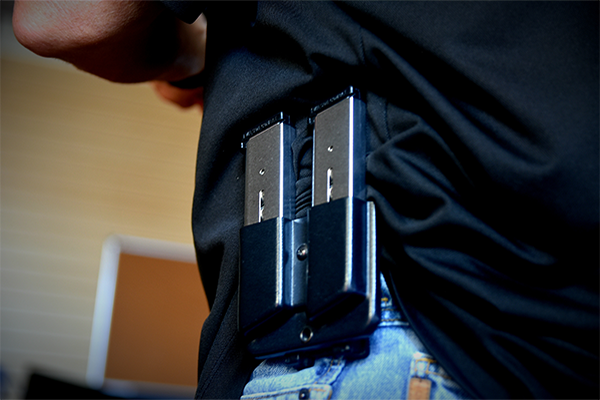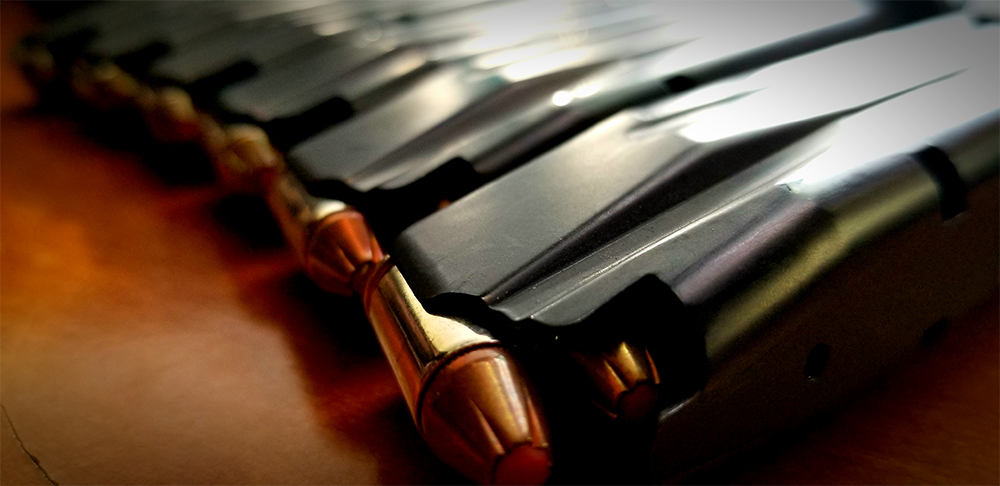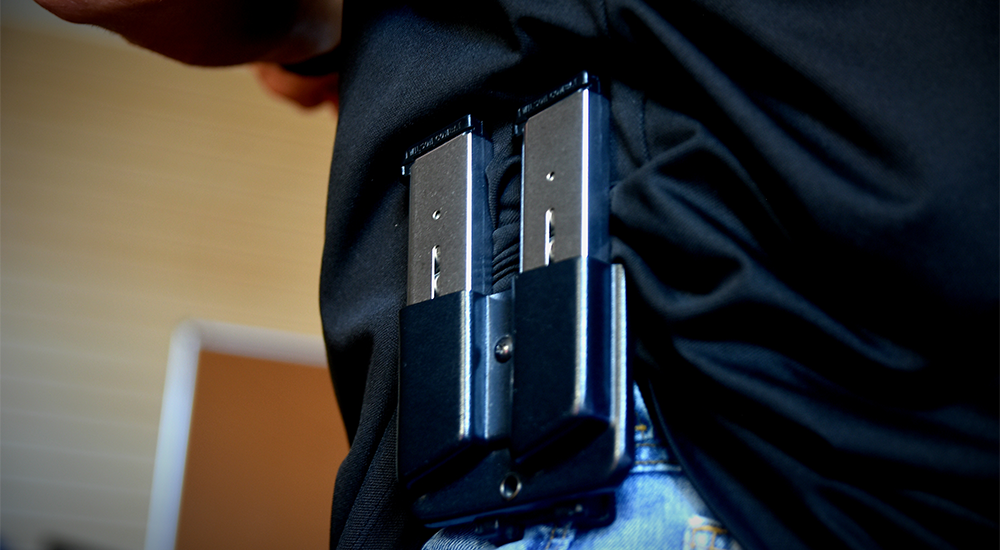
By Vic Laboy
The idea of carrying spare magazines in addition to your firearm is often overlooked. Most assume only what’s in their weapon will suffice. Ideally, we aim for the most lightweight, yet efficient everyday carry configuration; however, sometimes you need to carry more to truly be prepared. Take a look at police officers around you and you’ll often find at least two spare magazines on their duty belts. This is not for display and has an appropriate purpose.

Why Carrying Spare Magazines Is Important
The sole purpose of carrying spare magazines is to maintain readiness. Most people do not carry additional mags to shoot more. Of course you can shoot more because you have extra magazines, but more importantly you never know when mechanical failure could happen. A renowned instructor with Thunder Ranch once shared his story of the time he exited his patrol vehicle and experienced a malfunction. Upon exiting the unit, the base plate of the magazine seated in his pistol snagged on the seatbelt and ripped it from the magwell. This resulted in rounds falling to the floor leaving him with a single round in the chamber. Because he had spare magazines, he was able to remove the malfunction and replace it with a fresh mag. Instead of leaving him with the “world’s most expensive single-shot 1911 pistol” as he put it, he was able to stay in the fight, maintaining mission readiness.
Preparation is key and in this line of work, it is always best to be overprepared rather than under. Countless times, officers are caught in long-lasting engagements and in the heat of the moment, it is easy to dump an entire 17-round magazine in less than 30 seconds. In a firefight lasting five minutes, you don’t want the 30-second burst to be your only line of defense against a threat firing back. Even though most will not have to switch to secondary magazines, it provides you the reassurance that you are ready to face any challenge. Even the most highly trained field agents will carry at least one spare mag.
Issues Faced
Nothing we do is free of issues, and we are bound to experience some difficulties. Some are minor but can grow into larger problems down the line. For instance, most prefer their EDC to be as concealed as possible. If you are running a BLACKHAWK! double stack dual magazine pouch, it’s easy to see it’s not made for concealment. Even though you can place your shirt or jacket over the mag pouch, you risk severe printing due to the bulkiness of the setup. Some companies offer more slimline pouches and even include pancake style clips. This can bring the rig closer to the body for maximum concealability, but printing can always be a risk.
Another issue is some magazines will only properly secure in their designated pouches. For instance, most law enforcement agencies run the Glock 17 or 22 ,and Glock mags are not the thinnest of the bunch. As a result, these will not secure into a pouch geared for a Sig Sauer 1911 or Smith and Wesson M&P9. On the opposite end of the spectrum, thinner double stack mags such as the Sig P320 or Ruger SR9 will require you to adjust the retention levels so they are properly seated in the pouch and do not come loose during an engagement. If you do not have a mag holder capable of adjusting the retention, a universal pouch may not be the best fit if your magazines require adjustments.

Effective Carry Tips
For the most efficient carry methods, choose what is most comfortable for you personally. There are a variety of options available on the market, and you are bound to locate the method that best fits your setup. Whether you prefer carrying one mag or two, the choice is yours. Granted, carrying two magazines gives you more ammunition; however, you must consider the weight difference in addition to your carry pistol and other items in your EDC. Also consider the placement of your spare magazines. For instance, most that carry their firearm in the 3 o’clock position on the body and will carry spares on the opposite side, or 9 o’clock. It is not imperative that your mags rest here, this is just the most commonly found with more experienced shooters and permit holders.
There are many ways to carry spare mags on your person at all times, and you must adapt to what fits you best. If you don’t wish to fix a magazine pouch to your belt, some holster companies offer configurations with a “sidecar” attachment. This allows you to store a single spare mag with your firearm in a single position. The greater benefit to this carry method is fewer moving parts. Your actions are focused on a single location rather than both your left and right side.
A less common magazine carry form is a duty clip attached to the base plate, like that of a pocket knife. This allows for pocket carry which offers quick and easy access from anywhere on the body. You are not restricted to only carry in the pocket as this can be placed in the waistline for concealment purposes as well. The downfall to this is these clips can warp or lose retention levels overtime. The clip can fall off entirely and rendering this method useless.
Lastly, training is imperative, and you must learn how to properly operate your equipment. If you advance without the knowledge necessary to effectively perform a reload, you may find yourself in a bind. Take your time and remember that you do not have to rush. Be slow and learn the proper movements and hand placement. Learning each aspect allows you to develop a tactical mindset in order to complete the task.

Final Regards
No matter your preferred carry method or position, it is important to familiarize yourself with your gear. Always know the status of each component to maintain utmost efficiency when carrying. Whether you are building your duty belt setup or getting ready for a night on the town, learn what fits best and find what you are most efficient with. Your performance and training will determine the efficiency and effectiveness of a smooth reload no matter the positioning. You can practice all this from the comfort of your own home. Once you have determined your most suitable preference, visit us online or see one of our retail associates and we will gladly assist you. As always, train hard, train smart, and stay safe out there.




Leave a Reply